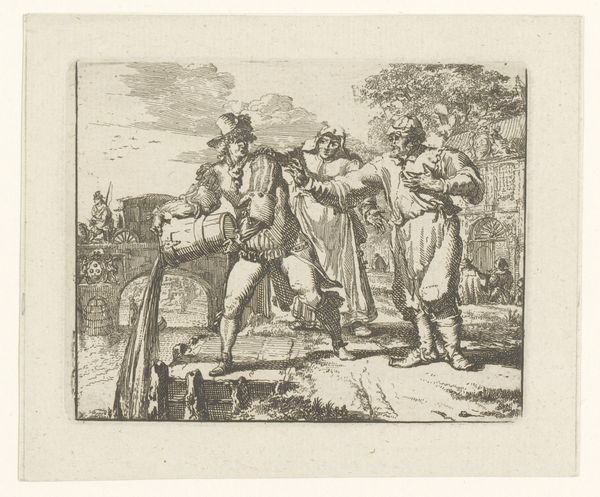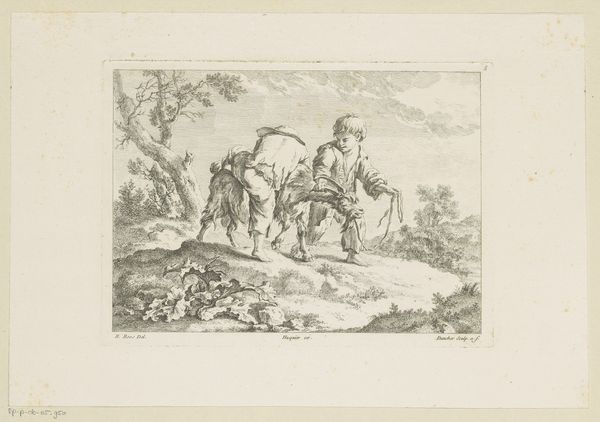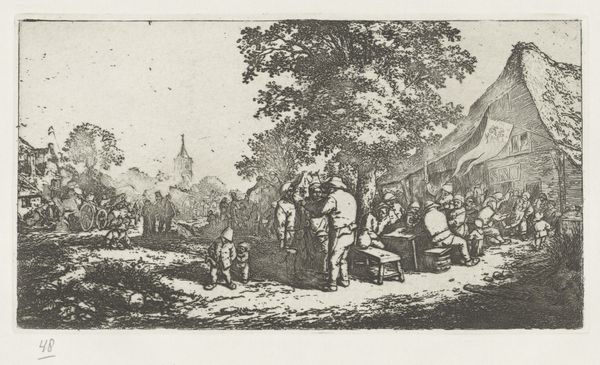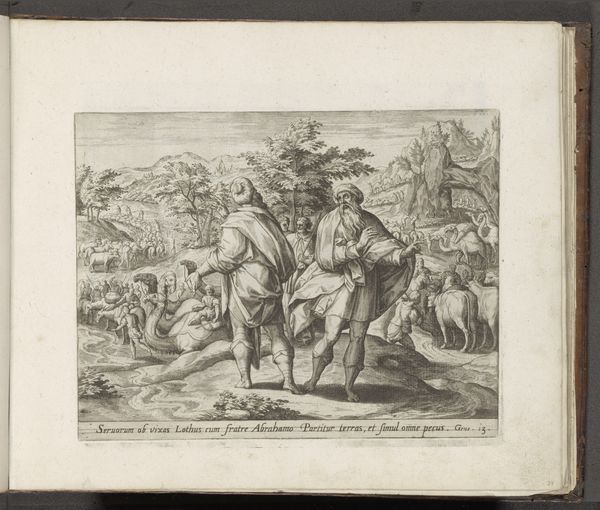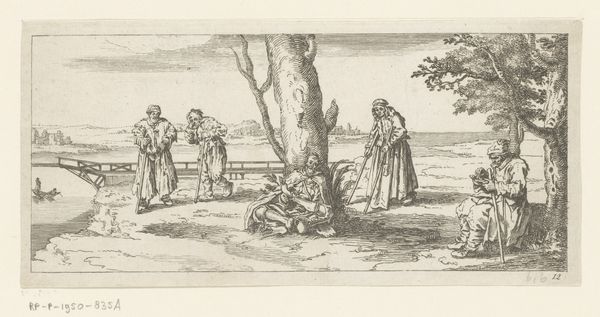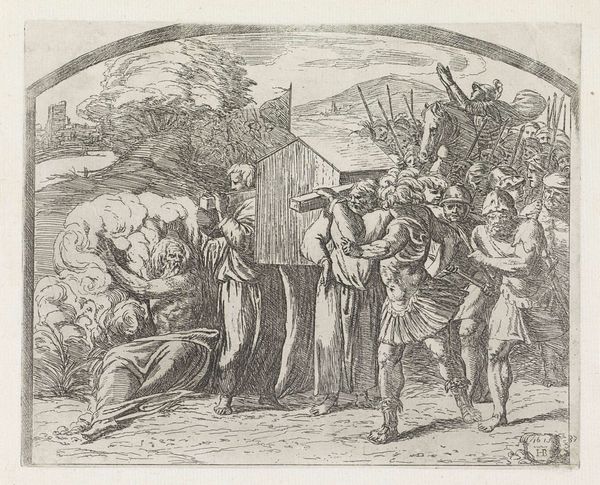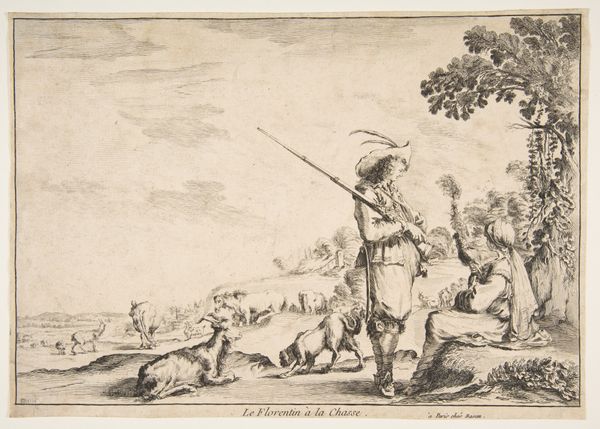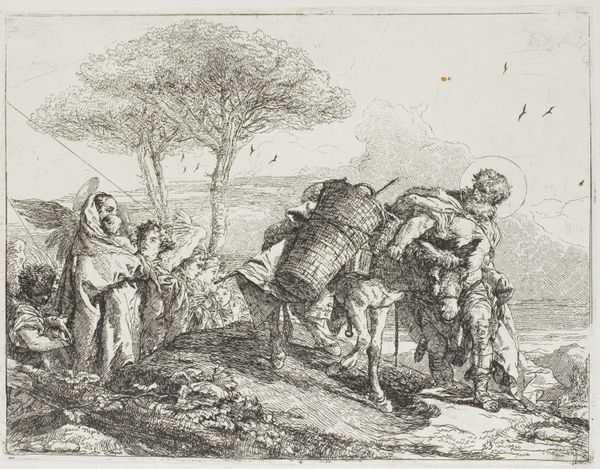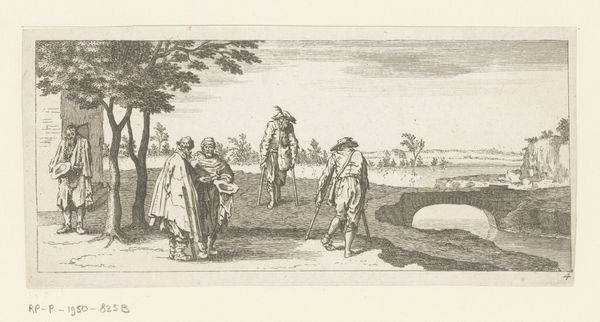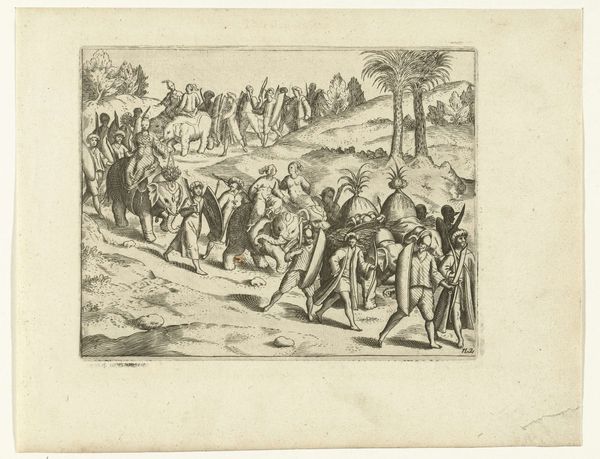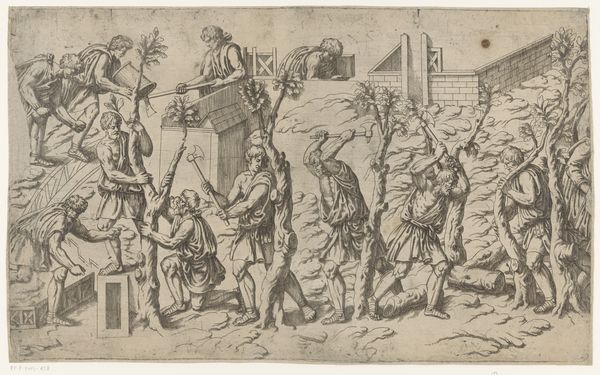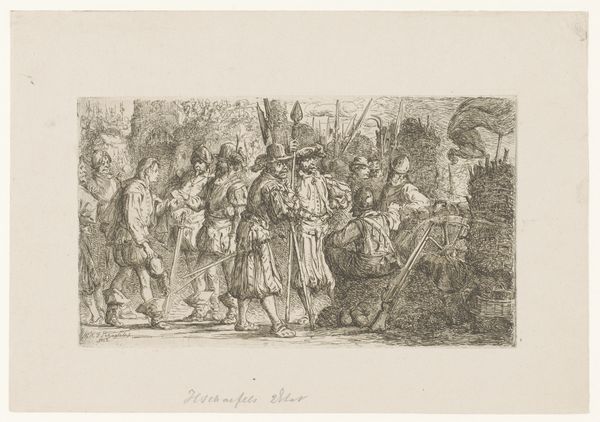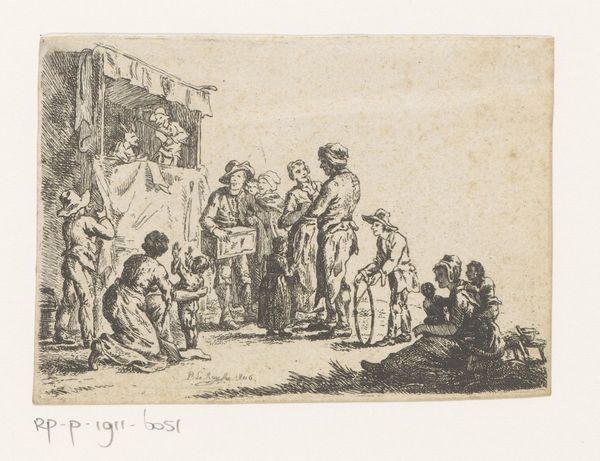
print, engraving
#
narrative-art
#
dutch-golden-age
#
mechanical pen drawing
# print
#
pen illustration
#
pen sketch
#
dog
#
old engraving style
#
landscape
#
figuration
#
personal sketchbook
#
ink drawing experimentation
#
pen-ink sketch
#
pen work
#
sketchbook drawing
#
genre-painting
#
storyboard and sketchbook work
#
engraving
Dimensions: height 92 mm, width 119 mm
Copyright: Rijks Museum: Open Domain
Curator: Here we have Romeyn de Hooghe's "Man op krukken wordt weggejaagd," an engraving dating back to 1668. What strikes you first about this print? Editor: The sheer energy of the scene! It's small, but crammed with furious movement. The agitated dog really captures the hostile mood. It's interesting the characters aren't individualized, everyone just sort of an archetype of rural Dutch life. Curator: Exactly! Consider that de Hooghe was a prolific printmaker; his workshop functioned almost as a factory, producing countless images for consumption. These were not unique works, but repeatable images serving a specific purpose, disseminating political and social commentary. Editor: It’s the detail I find compelling, all rendered through repetitive pen strokes. The dog, the crutches, even the distant house – all contribute to a larger visual symbol. The dog to me always represents fidelity or loyalty, here I think loyalty is used sarcastically. Curator: Interesting. Consider also the choice of medium. Engraving allows for precise replication and mass distribution, indicating the intention to reach a broad audience. The linear quality reinforces a sense of sharp edges, social divisions perhaps? Editor: Yes, and how these divisions resonate even now. The image could easily be reworked with new meaning through recontextualization. And, as you mention materials, the lines evoke feelings of hard work for the artist and for the portrayed working class. Curator: This is where thinking about the materiality is interesting, isn’t it? We must examine how images, such as this print, shaped societal views and labor. Printmaking was integral to the political, social, and artistic landscape of the Dutch Golden Age. Editor: Absolutely. Analyzing the symbology, material means, and context is crucial in getting to the full image here. De Hooghe captured a moment in time that clearly tells a larger story than just some dog chasing a man with crutches! Curator: Indeed. It's amazing how this detailed print offers such insights into production practices, audience engagement, and socio-political issues of its era. Editor: Exactly! Now, it encourages to rethink the emotional weight that small, mass-produced art can carry through the years.
Comments
No comments
Be the first to comment and join the conversation on the ultimate creative platform.
